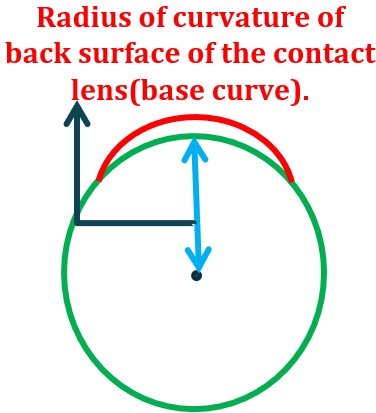Contact Lens Base Curve & Diameter Explained (and why they are so important)
24th Jul 2024

The base curve and diameter of contact lenses are two important factors to consider when purchasing lenses. The base curve refers to the curvature of the back surface of the lens, while the diameter is the width of the lens. These measurements are crucial for ensuring the contact lenses' comfortable and safe fit on the wearer's eyes.
What is the base curve of a contact lens?
The base curve of a contact lens is measured in millimeters and is specific to each individual's eye shape. While base curves come in a range of different sizes, they typically fall between 8 and 10 millimetres. The higher your base curve measurement, the flatter your cornea whereas a lower base curve reading reveals a steeper cornea.

Image source: Smart Optometry Academy
It is important to get the right base curve for your contact lenses because a lens with a poor fit can cause irritation and a lens with the wrong base curve may not provide optimal vision correction. Your optometrist can help you determine the correct base curve for your contact lenses and better explain the tailored BC in your contact lenses.
What is the diameter of a contact lens?
The diameter of a contact lens is the width of the lens from edge to edge and is determined by the size of the wearer's iris. Also measured in millimeters, a typical contact lens diameter usually falls between 13 and 15 millimeters.
As with the base curve, It is important to get the right diameter for your contact lenses to ensure a comfortable and effective fit.
A contact lens with the wrong diameter can cause discomfort and redness, as well as difficulty seeing. For example, smaller contact lenses or those with a 16mm diameter might not be suitable for everyone.
How do you determine the base curve and diameter for contact lenses?
When determining the appropriate base curve and diameter for contact lenses, it's important to consult with your optometrist. They will measure your eye size and shape to prescribe lenses that fit correctly and provide guidance on this.
The impact of using contact lenses with the wrong diameter and base curve:
Unfortunately, contact lenses are not “one size for all” and you must ensure that your lenses are the correct fit for your eyes. Wearing contact lenses that are not the correct size can have several negative effects. Some of the potential impacts of wearing lenses with the wrong base curve or diameter include the following:
- Discomfort and irritation: Contact lenses that do not fit properly can cause discomfort and irritation, such as redness and itching.
- Blurred vision: Poorly fitting contact lenses can affect your vision, leading to blurry or distorted vision.
- Dry eye: A lens that does not fit properly can cause dryness of the eye, leading to discomfort and potential damage to the eye.
- Eye strain: Wearing contact lenses that do not fit well can cause eye strain, leading to headaches and other symptoms.
- Risk of eye damage: Wearing contact lenses that do not fit properly can increase the risk of eye damage, such as corneal abrasion or infection.
These risks are not hypothetical. As the American Academy of Ophthalmology highlights, improper contact lens fitting can lead to severe eye issues.
Laura Butler of Parkersburg, W.Va., experienced "extreme pain in both eyes" just 10 hours after first wearing coloured contact lenses bought from a souvenir shop. "Because I had not been properly fitted by an eye care professional, the lenses stuck to my eye like a suction cup,"
Overall, it is important to choose contact lenses with the correct base curve and diameter in order to avoid these negative effects and ensure a comfortable and effective fit. Understanding whether the BC in contacts matters and recognising the significance of base curves can prevent these issues.
Many people believe that all contact lenses are the same, but this is a common misconception. Each person's eyes are unique, and therefore, the lenses must be tailored to fit their specific needs. Optometrists often emphasise the importance of precise measurements for base curve and diameter to avoid discomfort and vision problems.
When ordering your contact lenses online, ensure that you select the correct base curve and diameter based on your prescription from your optometrist.